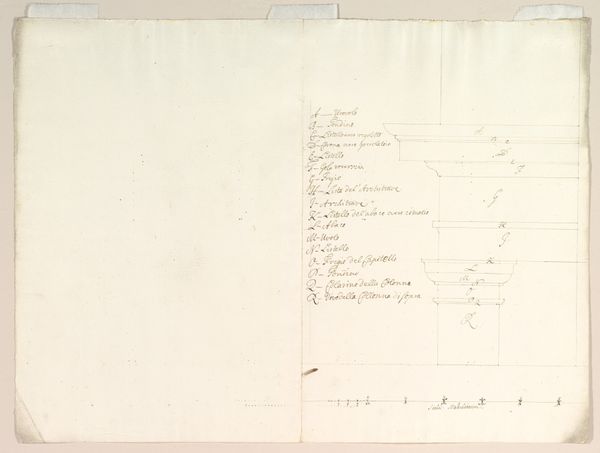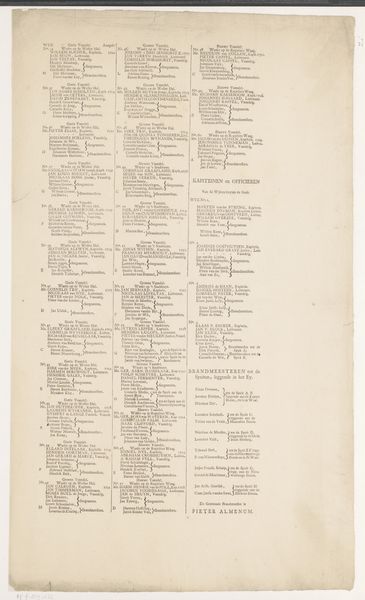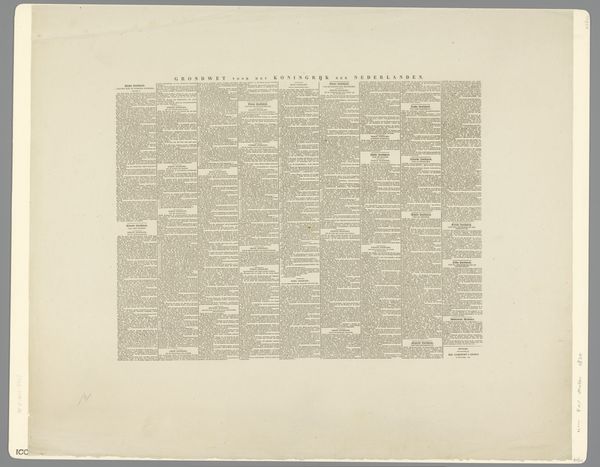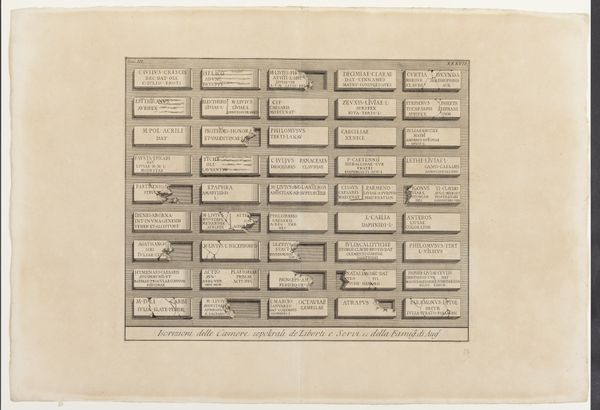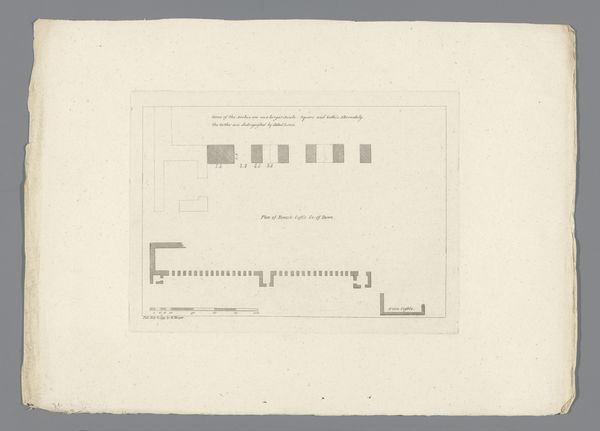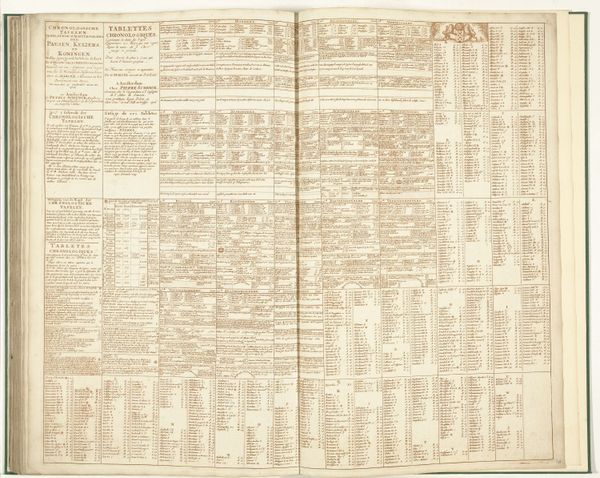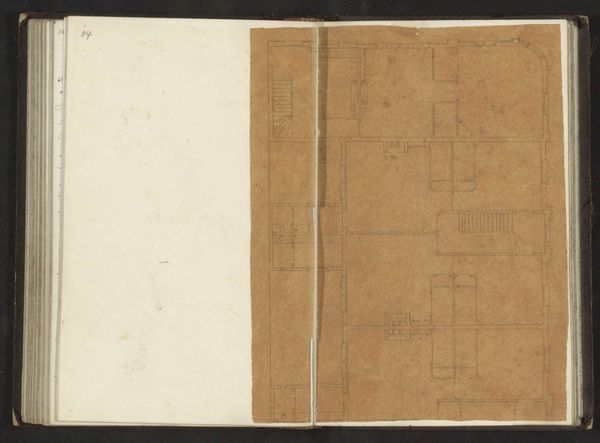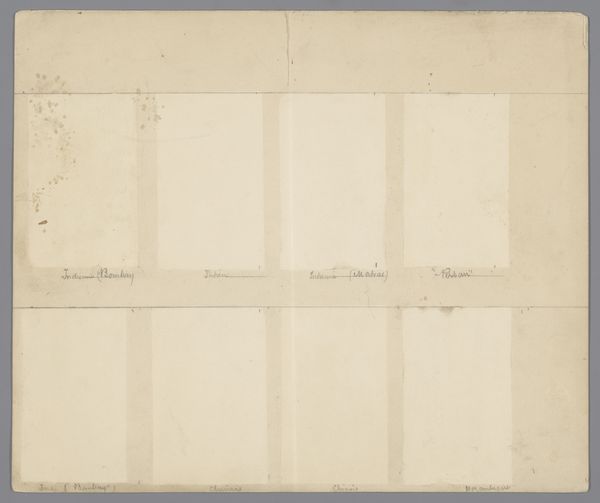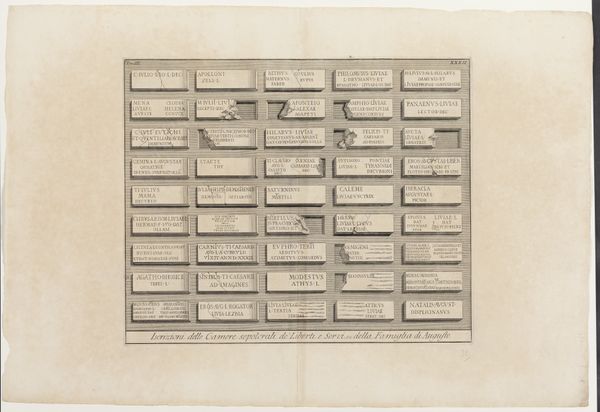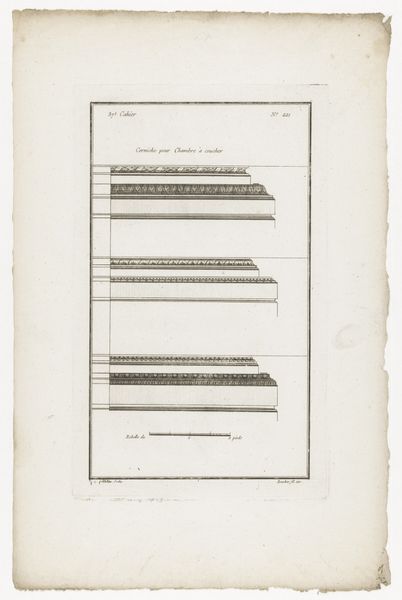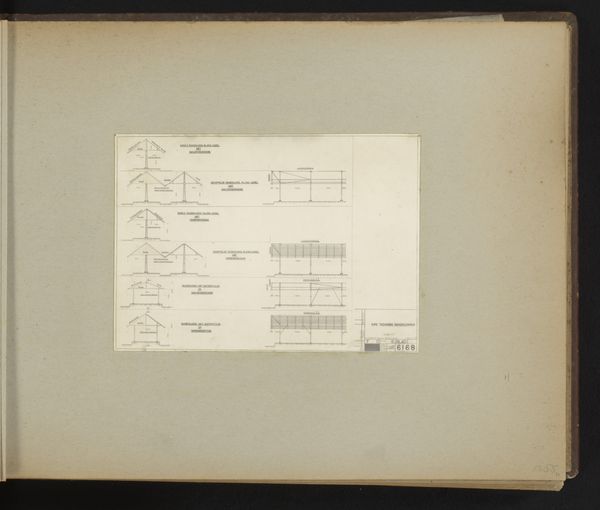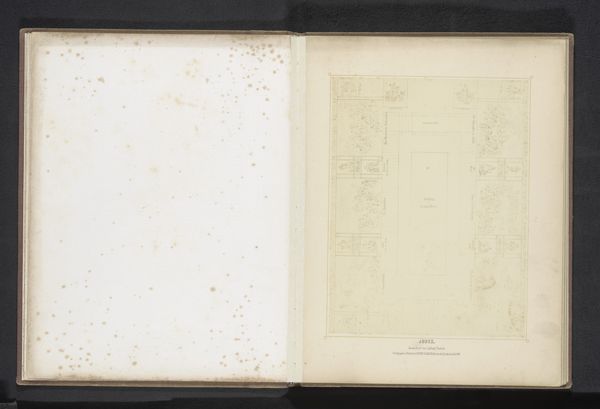
Geschied- en Tijdrekenkundige Tafel, behoorende tot het Kort Begrip der Algemeene Geschiedenis van Curas en Schröck, vervolgd door N.G. van Kampen, en loopende van den Jare 1795 tot 1821; uitgegeven door de Maatschappij: Tot Nut van t'Algemeen 1827
0:00
0:00
#
neoclassicism
# print
#
geometric
#
history-painting
#
academic-art
Dimensions: height 555 mm, width 655 mm
Copyright: Rijks Museum: Open Domain
Curator: So, we're looking at a print from 1827, titled "Geschied- en Tijdrekenkundige Tafel," which translates to something like "Historical and Chronological Table." It was produced by the Maatschappij tot Nut van 't Algemeen—The Society for Public Welfare—in the Netherlands. Editor: My first impression is… overwhelming. It’s a very dense grid; feels more like a spreadsheet than a work of art, to be honest. But intriguing in its own way! Like a forgotten algorithm. Curator: It is essentially an infographic, a way to visualize history between 1795 and 1821. You see how each vertical column represents a different stream of events, interconnected horizontally by year? Editor: Oh, I get it. It’s a timeline trying to wrangle history into neat little boxes. Kind of amusing when you consider how messy history actually is. Is it neoclassicism, or simply trying to put things into order using this style? Curator: The Society, influenced by Enlightenment ideals, sought to disseminate knowledge broadly. The neoclassical aesthetic lent itself to presenting information in an orderly, accessible fashion for didactic purposes. It represents that kind of time. Think about who the consumer of this art was in society. Editor: That makes sense. The production implies some ambition on the part of society. All those names carefully typeset, meticulously arranged… the labour behind this is palpable, isn't it? Who needed this information back then? Was it a learning material? Curator: Absolutely. Educational tools like this fostered a sense of shared civic identity. It shaped understandings of cause and effect for readers navigating their changing world. The intention was, in part, social reform. Editor: There’s something beautiful in this very utilitarian purpose, isn't there? Beyond pure aesthetic enjoyment, but offering structure. A moment of seeing information becoming artistic in its design... Curator: Precisely. It speaks to how art and knowledge production were deeply entwined during this period. What the materiality shows to the historical object that could inform us. Editor: This exercise in controlling time brings something, perhaps. It captures that specific yearning from the Enlightenment, where human control could have something to say. It’s rather moving now to appreciate what someone might make with such beliefs.
Comments
No comments
Be the first to comment and join the conversation on the ultimate creative platform.
